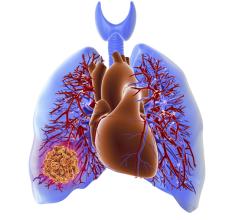
Getty Images
May 20, 2022 — Results from a retrospective analysis reveal significantly higher mortality rates for low-income residents hospitalized with ST-elevation myocardial infarction (STEMI) when compared to higher-income residents. The findings were presented today at the Society for Cardiovascular Angiography & Interventions (SCAI) 2022 Scientific Sessions.
Low socioeconomic status has been associated with worse clinical outcomes in cardiovascular diseases.(AHA) STEMI is a type of heart attack that mainly affects the heart’s lower chambers and can be more severe and dangerous compared to other types of heart attack.(Cleveland Clinic) While research demonstrates there is a link between income level and co-morbidities, little is known on the impact of patient’s income level and in-hospital mortality after STEMI.
Authors identified all adult patients who were admitted with STEMI and divided them in four quartiles based on the median household income of the zip code of the patient’s residence. Among 639,300 STEMI hospitalizations, 184,150 (35.1%) were lowest income residents and 123,815 (19.4%) were highest income residents.
Study findings include:
• The lowest income residents had higher all-cause mortality, length of stay, rate of invasive mechanical ventilation and lower inflation-adjusted cost compared to the highest income residents. The lowest income residents had an 11.8% rate of mortality and the highest income residents had a 10.4% mortality rate.
• Age: Lowest income residents tended to be younger (mean age of 63.5) compared to the highest income residents (mean age of 65.7).
• Gender: There were more females in the lowest income group (35.7%) compared to the highest income group (29.8%).
• Race/Ethnicity: Lowest income residents had highest proportion of black, Hispanic, native Americans patients and lowest proportion of white and Asian or pacific islander patients compared to the other groups.
• Location: The highest income residents had more hospitalizations in urban hospitals while the lowest income residents had more hospitalizations in rural hospitals compared to other groups.
• Cost Per Hospitalization: While the mortality rate for the lowest income residents was higher, the cost per hospitalization was lower compared to highest income residents ($26,503 compared to $30,540).
A retrospective analysis of adult discharges from the National Inpatient Sample (NIS) was conducted between 2016 and 2018 using ICD codes to identify STEMI patients. Patients were divided into quartiles based on the median household income of the zip code of the patient’s residence provided by NIS. Study models were adjusted for several patient-level and hospital level characteristics. Prevalence estimates were weighted using NIS-provided discharge-level weights to reflect national estimates.
“This study underscores the growing need to close the health disparities divide that is disproportionally impacting the patients who live in low-income areas,” said Abdul Mannan Khan Minhas, MD, with Hattiesburg Clinic Hospital Care Service in Hattiesburg, Miss. and lead researcher of the study. “As physicians, it’s imperative that we help everyone get access to high-quality medical care and look with a broader lens at the social and economic factors that could contribute to stark differences in outcomes.”
The authors state that further research is needed to identify the etiology of health disparities to help guide potential policy and public health interventions.
For more information: www.scai.org
Find more SCAI22 coverage here
Related Content on New Technology and Ideas to Address Health Disparities:
VIDEO: New Ideas in Addressing Cardiovascular Disease Disparities — Clyde Yancy, M.D
VIDEO: How Smartphones May Revolutionize Healthcare in the Developing World —Interview with Jacques Kpodonu, M.D.
VIDEO: Reducing Hypertension Among African-Americans — Interview with Kim Allan Williams, Sr., M.D.
VIDEO: New PLATINUM Diversity Data Shows Early DAPT Cessation OK in Minorities With New Generation Stent — Interview with Roxana Mehran, M.D., where she explains how trials can be designed to better include minorities.
VIDEO: Use of Wearable Medical Devices for Cardiac Rehabilitation — Interview with Robert Klempfner, M.D.
VIDEO: Use of Wearables to Track Electrophysiology Patients — Interview with Khaldoun Tarakji, M.D.
COVID-19 Cardiovascular Registry Details Disparities Among Hospitalized Patients
Study Finds Removing Cost from Calcium Score Testing Increased Utilization
Blacks Have Higher Mortality After PCI
Link Shown Between Economic Disparities and Cardiovascular Death in Middle-Aged Adults
VIDEO: Using an iPhone to Perform a Cardiac Ultrasound Exam


 February 18, 2025
February 18, 2025 








